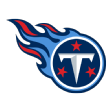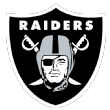The NFL's 20 biggest outlier contracts, and why a fullback reigns again

NFL contracts are wildly different from those of the other big four American sports. For one, baseball, basketball and hockey deals are mostly guaranteed. Football deals are the opposite. When you hear about a contract in one of those sports, you can usually feel pretty comfortable judging it by the total, cumulative numbers. In football, we're usually stuck waiting for days to find the actual terms of the deal, which might vaguely approximate the initial reports. Kwon Alexander's four-year, $54 million deal with the 49ers, for example, really boils down to a one-year, $14.5 million pact.
Contracts are also different in the NFL because there are huge differences in what players are paid at different positions. A truly great player is going to get a max deal in the NBA, regardless of whether he's a center or a point guard. The highest-paid players in hockey are a mix of skaters, although goalies are left aside. Relievers don't typically make as much as starting pitchers by virtue of their (relative) lack of usage, but hitters and pitchers are mostly an even split at the top of the baseball market. In the NFL, it's quarterbacks and then a huge drop off to everyone else. Fifteen of the 16 largest cap hits in football in 2019 belong to passers.
As a result, it can be tough to gauge what actually represents a huge deal for a player at a given position. Every year, this column steps in to try to figure out which players actually have the biggest commitments in football after adjusting for their respective positions. It's more than trivia; evaluating these contracts and finding the most expensive outliers in the league give us a sense of how well teams negotiate and who they see as transcendent players. This year's free-agent safety class, as an example, might have seemed six or seven deep with similarly promising pieces. When you actually look at their deals, though, it's clear that there is a three-person tier at the top and a huge drop off to the rest of the bunch. (All three of those deals made this column.)
To measure outlier deals, I've gone through each multiyear deal of three seasons or more signed since the league adopted its current CBA in 2011 and sorted them by position. As a measure of contract value, I'm using the three-year compensation for each deal, which I've found several salary cap managers in the NFL to use as a reasonable shorthand for value. This is the actual cash a player stands to take home over the first three years after he signs an extension. Few deals have any guaranteed money after three seasons, at which point organizations usually opt to sign a player to a new deal or move on.
I compare each contract's three-year value to the top 20 deals signed at that contract's position since 2011, and that yields our difference. Landon Collins, as an example, will make $45 million over the first three years of his deal with Washington. Our baseline for the top 20 safety deals in football currently comes in at $30.1 million over three years, so Collins is right around 50% above his positional average.
Two notes, and then we'll get started with the 20 biggest outliers in football. One is that we don't have firm numbers for the Carson Wentz extension, so I've temporarily excluded him from the discussion. In addition -- and this is very important -- an expensive outlier of a contract doesn't necessarily make for a bad deal. Aaron Donald and Khalil Mack make this list after signing huge extensions in 2018, but they're franchise-altering superstars. You would happily have them on your roster at an enormous salary. I've tried to mention where I think a deal hasn't gone well for each respective team.
Let's start with the 20th-largest outlier currently on NFL books. What do you know? It's a quarterback:
Jump to a mystery player:
15. The biggest O-line contract ever
10. An RB with major questions
7. This pass-rusher is worth it
4. The DB who reset the market
20. Matt Ryan, QB, Atlanta Falcons
Three-year compensation: $94.5 million
Percent above average:28.1
The Falcons surprisingly didn't give Ryan an extension after his MVP season in 2016, instead choosing to wait until the final year of the Boston College product's first extension before handing him a five-year, $150 million pact in May 2018. Julio Jones, meanwhile, attempted to get a new deal done around the same time with three years left on his existing extension, and he seems likely to reset the wideout market this summer with two years left on his contract.
Owner Arthur Blank has never been shy about paying Ryan like the best quarterback in football. His first extension in 2013 set a record at the time for three-year compensation. This most recent contract made Ryan the first member of the $30 million club, and the structure of the deal basically guarantees he will take home $117.5 million over four seasons through 2021, when he'll be 36.
19. Kevin Zeitler, G, New York Giants
Three-year compensation: $38 million
Percent above average: 29.4
While Sashi Brown might have been tanking for the entirety of his run as Browns general manager, he handed out a pair of huge deals to entice veterans in their primes to play in Cleveland. John Dorsey got rid of both of those contracts this offseason by cutting Jamie Collins and trading Zeitler to the Giants for Olivier Vernon. Zeitler is yet to make a Pro Bowl in seven seasons with the Bengals and Browns, but his contract is safe as long as Dave Gettleman is in charge of the Giants. An expensive hog molly is still a hog molly.
18. Taylor Lewan, OT, Tennessee Titans
Three-year compensation: $50 million
Percent above average:31.7
Washington tackle Trent Williams wants a new deal, and the contract he'll be targeting is Lewan's five-year, $80 million pact. The ornery Michigan standout is the league's highest-paid left tackle, as his $50 million three-year cash flow topped the $48 million Nate Solder netted in his free-agent deal with the Giants last March.
The only hole you can poke in Lewan's game is penalties. The three-time Pro Bowler has averaged more than eight flags and three holding calls per season across his four seasons as a starter.
17. Kawann Short, DT, Carolina Panthers
Three-year compensation: $52 million
Percent above average: 32.3
With the Jaguars restructuring Marcell Dareus' deal, Short is now the NFL's second-highest-paid defensive tackle behind Aaron Donald. The 30-year-old is unquestionably an asset to any defense, but he's not quite at Donald's level. Short racked up just three sacks and seven knockdowns last season, although he did lead all defensive tackles with nine tackles for loss against the run. The Panthers will show more 3-4 looks this season after signing Gerald McCoy, but Short's numbers shouldn't suffer much since they'll still spend plenty of time with four down linemen against pass-happy teams like the Falcons, Saints and Bucs.
The Panthers will hope for increased production from their star tackle after adding McCoy and edge rushersBruce Irvinand Brian Burns to shoulder the workload this offseason. If not, they could ask Short to take a pay cut from his $12 million base salary in 2020. Stats aren't everything, of course, but at this price point, defensive linemen simply have to produce sacks and terrify opposing quarterbacks to return value.
16. Jimmy Graham, TE, Green Bay Packers
Three-year compensation: $30 million
Percent above average: 32.7
Graham has been atop the tight end charts for six seasons running, having signed a four-year, $40 million deal with the Saints in 2014 before the Packers followed up last offseason with a three-year, $30 million pact. No other tight end has hit an annual average of $10 million or more on a multiyear deal, althoughGeorge Kittle could become the first next offseason.
After a 10-touchdown season in 2017, it was easy to imagine Graham and Aaron Rodgers dominating in the red zone during the former basketball player's debut season in Green Bay. That didn't happen. Graham's touchdown rate from the previous season wasn't sustainable, given that he caught just 57 passes all season. While Graham caught 55 passes last season, he managed only two touchdowns. Rodgers posted the third-worst red zone QBR of his career. Graham's touchdown rate will likely fall somewhere between those extremes in 2019, but the Packers can -- and likely will -- save $8 million on their 2020 cap by cutting Graham, 32, after the season.
15. Trent Brown, OT, Oakland Raiders
Three-year compensation: $50.75million
Percent above average: 33.7
This figure actually undersells Brown's deal because I'm comparing his contract to all other tackles. With the Raiders moving him back to the right side after his revelatory season at left tackle with the Patriots, Brown's three-year cash flow dwarfs the competition. The only other right tackles topping $30 million over three years are former top-five pick Lane Johnson ($30.9 million) and newly signed Broncos tackle Ja'Wuan James ($38 million). Brown would be the highest-paid left tackle in the league on this deal, let alone where he stands on the right side.
The Raiders were able to keep this deal relatively short, as they can get out of this contract without any dead money after two years and $36.8 million if Brown doesn't live up to expectations. Given that he's moving from arguably the best offensive line coach in football (Dante Scarnecchia) to the worst (Tom Cable), it'll take a huge individual effort from the 6-foot-8 Super Bowl champion.
14. Mitch Morse, C, Buffalo Bills
Three-year compensation: $36 million
Percent above average: 37.7
The Bills generally went for volume this offseason to help Josh Allen, as general manager Brandon Beane added as many as eight new offensive starters to both seal up a leaky offensive line and surround Allen with weapons. Morse's deal -- four years, $44.5 million -- isn't shocking in terms of total compensation, but it's a record for a center and clearly patterned on the four-year, $42 million pact Ryan Jensen signed with the Bucs as the top center available last offseason. The cap rose by 6.2 percent this offseason, so after accounting for inflation, $42 million turns into ... $44.6 million.
Injuries are the biggest concern for Morse, who has completed just one 16-game season in his four years in the league.
13. Le'Veon Bell, RB, New York Jets
Three-year compensation: $39.5 million
Percent above average: 39.1
In the end, while Bell didn't get the mammoth deal he expected, the Jets ended up paying the player, not the position. He comfortably has the second-largest deal of any back in football until Ezekiel Elliott signs his extension with the Cowboys, and there's a significant drop-off between the former Steelers star and David Johnson ($31.9 million) in third.
The Jets can get out of Bell's deal after two years and $28.5 million, but even that would put Bell back on the market as he turns 29 for one more payday.
12. Aaron Rodgers, QB, Green Bay Packers
Three-year compensation: $103 million
Percent above average: 39.6
You're familiar, I hope. Rodgers had two years and $41.6 million remaining on his previous contract when he signed a four-year, $134 million extension with the Packers last August.
In practical terms, Rodgers is now entering the second year of a four-year, $125 million deal, with $51 million in unguaranteed base salaries tacked on over the final two seasons for cap purposes and to inflate the overall value. Rodgers will be 38 by then, at which point the Packers will either likely hand him a new deal or move on from their future Hall of Fame quarterback.
11. Tyrann Mathieu, S, Kansas City Chiefs
Three-year compensation: $42 million
Percent above average: 39.8
What a difference one year makes! Last offseason, the Cardinals decided to cut Mathieu to get out of guaranteeing the star safety $18.8 million between 2018 and 2019. Mathieu ended up taking a one-year, $7 million deal with the Texans, where he stayed healthy and showed more of the range he exhibited during his peak with the Cards.
The Chiefs promptly won a bidding war to hand Mathieu a three-year, $42 million deal with nearly $27 million guaranteed. Is it too much? On one hand, Mathieu wasn't coming close to that sort of a deal a year ago, and while he played well last season, it wasn't like we saw the consistent Defensive Player of the Year candidate that Mathieu looked like in 2015. At the same time, the Chiefs had a $13 million cap charge in 2018 for Eric Berry, who played 71 snaps all season for a team that desperately needed difference-makers in the secondary. With Patrick Mahomes still on his rookie deal, you can understand why the Chiefs took a swing on Mathieu.
10. Todd Gurley II, RB, Los Angeles Rams
Three-year compensation: $40 million
Percent above average: 40.8
What a difference a few weeks make. Gurley was a borderline MVP candidate in 2017 and continued to produce like a superstar for most of 2018, only to miss time in December with a knee injury. C.J. Anderson came off the street to excel in Gurley's absence, then looked like the better back during the postseason. Reports after the offseason have suggested that Gurley is dealing with arthritis in his knee, which was surgically repaired in college. The Rams then used a third-round pick on Memphis back Darrell Henderson while suggesting that they plan to use more two-back sets in 2019, getting Sean McVay away from the 11 personnel he used on virtually every snap between 2017 and 2018.
The case for paying Gurley was built around the idea that he was a uniquely gifted back who could both shoulder one of the league's largest workloads while remaining extremely efficient. Both arguments seem shaky at best as we head into 2019. The Rams reset the running back market when they paid him last July, as the previous leader for three-year cash flow on an active extension was LeSean McCoy at $27.3 million. Even now, Gurley and Le'Veon Bell are way ahead of the running back pack by virtually every contractual measure.
What makes this even more difficult is that the Rams didn't need to do this. As I mentioned last July when Gurley signed his deal, the Georgia product still had a year left on his original rookie deal. The Rams could have picked up a fifth-year option for 2019 and would have also been able to franchise him on a relatively modest number for 2020. My best estimate is that the Rams would have been able to go year-to-year with Gurley and paid him somewhere around $24 million without having to commit on a long-term deal.
Instead, the Rams virtually guaranteed Gurley $40 million over three years by signing him to an extension. That's an enormous bet that the guy we saw in 2017 was going to continue to play at that same level for years to come. The Rams theoretically ran the risk of upsetting Gurley by not handing him a deal at the first opportunity, as Washington did with Kirk Cousins, but this is the same organization that waited until Aaron Donald finished the fourth year of his rookie deal before handing out an extension. Neither Cousins nor Donald was dealing with an arthritic knee or playing at a position with significant attrition rates. It's too early to write off Gurley -- he was living up to expectations as recently as November of last season -- but it's hard to believe that the Rams would do this deal again if they had the chance.
9. Andrew Norwell, G, Jacksonville Jaguars
Three-year compensation: $41.5 million
Percent above average: 41.3
The Jaguars rolled over oodles of cap room for years during their rebuilding process, one of the reasons they were able to commit more than $198 million to their roster during the 2018 season. Only the 49ers spent more on their cap last year. Executive vice president of football operations Tom Coughlin aimed to make life easier for his running game by signing Norwell, who was an All-Pro for the first time with the Panthers in 2017, to a five-year deal worth $66.5 million.
Things didn't quite work out in Year 1, although the problems with the Jacksonville offense were beyond Norwell's paygrade. The Jags struggled with injuries at virtually every position, which included Norwell, who went on injured reserve in November with an ankle injury. As is typical with Jacksonville free-agent signings, the Jags only guaranteed the first two years of Norwell's deal, so they could theoretically move on from him after 2019 and eat $9 million in dead money. It would probably be too early to move on from him, but given that the Jags are projected to land well over the 2020 cap before extending Yannick Ngakoue, they might need to lean on Norwell's deal to create space.
8. Earl Thomas, S, Baltimore Ravens
Three-year compensation: $43 million
Percent above average: 43.1
Did the Ravens panic after cutting Eric Weddle and losing both C.J. Mosley and Za'Darius Smith in free agency? Maybe. If a team is going to hit the panic button, though, going after a future Hall of Famer is a pretty good fallback. It's clear the Seahawks had decided they were going to move on from Thomas even before he flipped Pete Carroll the bird while being carted off last September, but the Ravens had no qualms about giving Thomas $32 million in guarantees over the next two seasons.
Injuries are an understandable concern for a player who has missed 18 games over the past three seasons, but the Seahawks have been a significantly better defense over that time frame with Thomas in the lineup:
7. Khalil Mack, LB, Chicago Bears
Three-year compensation: $73.3 million
Percent above average: 43.5
When the Bears traded two first-round picks as part of a package to acquire Mack, they were simultaneously handing him and his agent what amounted to a blank check. There was no way, of course, that the Bears were going to trade a franchise-altering haul for Mack without signing him to an immediate extension. Contracts are about leverage, and Mack had more leverage than just about any player in the league.
The former Raiders star signed a deal which dwarfed the deals signed by the likes of Von Miller and J.J. Watt, let alone the contracts top edge rushers signed this offseason. His six-year, $141 million pact included $60 million guaranteed at signing, $18 million more than Miller's deal, which had been the standard-bearer at the position. Miller had been the only one to top $54 million in three-year cash flow at $61 million; Mack went $12.3 million past Miller's deal. When you factor in the surplus value of the draft picks the Bears sacrificed as part of the deal, Mack is being paid like a top-of-the-line franchise quarterback.
Having said all that, after Year 1 in Chicago, I think Bears fans would happily pool together the money and pay Mack out of their own pockets if need be. Mack was expensive, but he was worth every penny to the Bears last season.
6. Russell Wilson, QB, Seattle Seahawks
Three-year compensation: $107 million
Percent above average: 45.0
To put quarterbacks in context, Mack has the largest three-year cash flow of any non-quarterback at $73.3 million. In terms of raw total, he would have the eighth-largest three-year cash total of any player in football, which would mean that there are seven quarterbacks ahead of the rest of the league. When you consider that group includes midtier passers like Kirk Cousins, Jimmy Garoppoloand Matthew Stafford, it's clear just how significantly quarterbacks stand out.
Wilson has the biggest contract in the league, which in itself isn't really very interesting for the purposes of this piece. He's a great quarterback. When great quarterbacks come up for extensions, they get record deals. It was his turn. Wentz got a similar sort of contract, as will Dak Prescott. When Mahomes signs his extension, which could come as early as next January, the Chiefs star will likely top them all.
5. Zack Martin, G, Dallas Cowboys
Three-year compensation: $43 million
Percent above average: 46.4
The Cowboys are the king of the never-ending contract. The longest contract in the league is the eight-year, $97.6 million extension signed by Dallas left tackle Tyron Smith. No player is currently signed to a seven-year contract, but two of the 15 players signed to six-year deals are Martin and Cowboys center Travis Frederick. It would hardly be a surprise if Ezekiel Elliott and Dak Prescott join this list when the two other Dallas cornerstones sign their own extensions as early as this summer. (You can read more about the pros and cons of this contract philosophy here.)
It would be hard to raise any serious reservations about the Cowboys giving Martin the largest contract for a guard in NFL history and one of the most significant position-independent deals in all of football. Martin has now made the Pro Bowl in each of his first five seasons, with three first-team All-Pro nods along the way.
The list of guys who can say they've done that across their first five pro seasons is 14 players long. Nine of those players are eligible for the Hall of Fame, and eight -- Lou Creekmur, Ollie Matson, Jim Brown, Dick Butkus, Lawrence Taylor, Dan Marino, Emmitt Smith, and Barry Sanders -- are enshrined in Canton. Patrick Willis and Joe Thomas are locks when they become eligible, and fellow active players Aaron Donald and Patrick Peterson are on course themselves. Martin is a 28-year-old and his peers all have gold jackets. Of course he's going to get paid.
4. Landon Collins, S, Washington
Three-year compensation: $45 million
Percent above average: 49.7
Washington really, really wanted to sign Collins this offseason. After moving on from D.J. Swearinger and seeing the Ha Ha Clinton-Dix trade fail to work out, Jay Gruden's team desperately needed a solution at safety. You could understand why they preferred Collins. The former Giants standout only turned 25 in January, making him the youngest of the free-agent safeties. He has a relatively clean injury history, although he did miss the final four games of 2018 with a torn labrum. The Alabama product has been a dramatic playmaker at times, although much of that leads back to his 2016 season, which is still his best by a considerable margin. Collins also famously idolizes late Washington safety Sean Taylor.
When the Giants turned down the option to stick Collins with the franchise tag for one year at $11.2 million, Washington pounced with a six-year, $84 million deal. Those numbers seemed shocking for a safety, and there was some assumption that the contract specifics would yield a much less impressive deal, but that's not really the case. Collins is only guaranteed $26 million, but the structure of this deal makes it extremely likely that he will take home that full $45 million figure over three years. (The only way Washington could get away with paying Collins $26 million would be if they cut him after one year, at which point Daniel Snyder & Co. would owe $22 million in dead money.)
How much is $45 million over three years for a safety? Before 2019, the only safety to make more than $33 million in cash over the first three years of his deal was Eric Berry, who was coming off of one of the most impactful seasons a safety has had in the modern NFL. The Collins deal was a huge leap forward for the position, and it helped reset the market for guys like Mathieu and Thomas, who signed shortly thereafter.
3. C.J. Mosley, LB, New York Jets
Three-year compensation: $51 million
Percent above average: 63.2
There's a big leap from No. 4 to No. 3, which brings us the second Jets free-agent signing of the offseason. Collins was in a similar ballpark to Berry, but there was no player close to Mosley's three-year cash flow playing a similar sort of role for an NFL team before the former Ravens star signed his deal with the Jets.
Before this offseason, the top three-year figure for a linebacker who doesn't primarily rush the quarterback was that of Jamie Collins, who the Browns gave $37.3 million to stay in Cleveland during a rebuild. The 49ers gave Kwon Alexander $40.1 million in the first three years of his four-year, $54 million pact, but only $14.5 million of that is guaranteed. Anthony Barr ended up getting $39 million over three years when he reneged on his agreement with the Jets to sign with the Vikings.
There are no qualifiers needed for Mosley's deal. He is a classic middle linebacker and is getting paid like nobody else at his position. Mosley tops Alexander's three-year cash flow by more than $10 million. He had $43 million guaranteed at signing when the previous record-holder for an inside linebacker was Luke Kuechly at $27 million. Unless the Jets want to eat $30 million in dead money to get out of this deal after one year and $43 million, Mosley will end up seeing all of this $51 million before turning 30.
Some might note that the Jets followed this offseason spending spree by firing general manager Mike Maccagnan and suggest that the organization was simply throwing gobs of money at whoever might take it. That's probably true, at least to some extent. If you're looking for a slightly more coherent plan, the Jets seemed to go out of their way to pay a premium for top-level talent at positions the league typically doesn't pay. Mosley's a cover linebacker. Barr would have rushed the passer more in New York, but those haven't been his primary duties in Minnesota. Bell is a running back. Jamison Crowder is a slot receiver. Even third overall pick Quinnen Williams, arguably the best player in the draft independent of position, is likely to line up as a nose tackle frequently during his debut season in the NFL.
2. Aaron Donald, DT, Los Angeles Rams
Three-year compensation: $67 million
Percent above average: 70.3
How many players win Defensive Player of the Year and then have a significantly better season the following year? Donald claimed the award for the first time in 2017 after racking up 11 sacks, 15 tackles for loss and 27 knockdowns in 14 games. That's a career season for most defensive tackles, and the Rams rewarded Donald by handing their former first-round pick a six-year, $135 million extension last August.
Donald followed up a season where, again, he was regarded as the best defensive player in football by nearly doubling his sack total from the prior year. He finished with 20.5 sacks, 25 tackles for loss and 41 knockdowns, leading the league in all three categories.
He won Defensive Player of the Year for the second consecutive season, and the two-time winners of this award usually need to keep their summers free for a trip to Ohio five years after they retire. The full list of players to win DPOY two or more times includes Joe Greene, Ray Lewis, Mike Singletary, Bruce Smith, Lawrence Taylor, J.J. Wattand Reggie White. That's six inner-circle Hall of Famers and a seventh, Watt, who will also be an immediate inductee when eligible. Donald is in rare company. As bad as the Gurley deal looks one year later, the Rams probably consider Donald's deal to be a bargain, even given that he's the second-highest-paid player in the league by this metric.
1. Kyle Juszczyk, FB, San Francisco 49ers
Three-year compensation: $15.45million
Percent above average: 174.3
For the third consecutive year, Juszczyk ranks head and shoulders above the pack. To put his four-year, $21 million deal in context, Donald would need to make about $108 million over three years to be similarly ahead of the defensive tackle market. Russell Wilson's four-year, $140 million extension would need to be a four-year, $202.9 million deal to rank similarly ahead of the quarterback class.
Nobody has joined the 49ers in rewarding the fullback position, either. Juszczyk is one of just four veteran fullbacks in the league signed to a deal of three seasons or more. The former Raven averages $5.3 million across that deal; the other three players average $5.6 million combined. Most of the league's multiyear deals at the position are rookie contracts, including several undrafted free agents. The only other fullback in the league with an average salary over $2 million is Patrick DiMarco, who is at $2.1 million.
You can understand why Kyle Shanahan might want to target a fullback like Juszczyk, who would help mask San Francisco's pre-snap tendencies while potentially creating a mismatch against a linebacker. I advocated for the Patriots to use James Develin in a similar way in advance of the Super Bowl, and their breakthrough came when they were able to use Develin and their tight ends to create mismatches out of a running formation in the passing game. Juszczyk offers similar flexibility.
The issue isn't wanting Juszczyk on the roster. It's paying him more than twice as much as any other fullback in the league. He has offered little as a runner over his first two seasons in San Francisco, carrying the ball 15 times for 61 yards. Those 15 runs include a pair of fourth-and-1 stuffs and a third-and-1 stuff which resulted in a lost fumble. Juszczyk has fumbled four times across 98 touches, which is the seventh-worst rate in the league over the past two seasons among players with 50 touches or more.
It's almost impossible for a back to be valuable with that sort of fumble rate. Niners fans might argue that Juszczyk was signed to serve as a receiver, and indeed, he has been more productive catching passes. Juszczyk has caught 63 passes for 639 yards over the past two seasons, and Shanahan has been able to scheme him open for big plays, most notably this 56-yard catch against the Vikings last September. Of course, Shanahan would also theoretically be able to scheme open another fullback or H-back, too.
Juszczyk's production as a receiver has been similar to players like Antonio Gates, Brandon LaFell and Jaron Brown over the past two seasons, guys who are on the fringes of NFL rosters at this point of their careers. It's hard to make a case that he has been a good enough receiver to overcome the fumble issues.
If the argument is that Juszczyk helps as a blocker, that's also tough to trust, as 36.8 percent of San Francisco's running plays with Juszczyk on the field result in a successful run by expected points added (EPA). Without Juszczyk on the field, though, that figure rises to 42.8 percent.
In the bigger picture, there just isn't much evidence of Juszczyk making a consistent difference. The 49ers are successful on offense by EPA for 41.9 percent of their snaps with Juszczyk on the field. Without him, they've been successful on ... 41.8 percent of their snaps. I don't think those on/off stats are enough to totally discount Juszczyk, but it's also fair to say that there isn't a clear case he's making a difference.
Is spending too much on a fullback going to make or break the 49ers' chances of competing? Of course not. Juszczyk's deal, though, is one of a series of shocking contracts the 49ers have handed out to make sure they get their guy at a given position, even if it means paying something well above market value or expectations.
Those deals have not aged well. Malcolm Smith, who signed a five-year, $26.5 million deal after relatively anonymous play with the Raiders, missed all of his debut season with a torn pectoral and only started five games in his second campaign while dealing with a hamstring injury. The 49ers paid him more than $12 million for two years of injuries and replacement-level play before forcing him to take a pay cut this offseason.
Jerick McKinnon, signed last March to a four-year, $30 million deal after struggling as a runner during his final two season in Minnesota, went down with a torn ACL in training camp. The 49ers couldn't have predicted that McKinnon would get hurt, of course, but there was never much logic in paying nearly $12 million in guarantees to a running back in a Shanahan scheme which has been finding useful backs out of nowhere for two decades. The NFL has been devaluing fullbacks for about as long. Juszczyk has bucked the financial trend, but the 49ers haven't reaped much benefit halfway through the league's largest outlier of a deal.























